The Archaeological Site of Atapuerca is situated about 20 km from Burgos in Spain. The Sierra de Atapuerca hide several limestone caverns. The caves of Atapuerca were discovered during the construction of a railroad in the 1890s. About one million years ago, the caves of Atapuerca provided shelter for humans and animals. At Gran Dolina, one of the caves, fossils of a new human species have been found, the Homo antecessor, the oldest known species to be found in Europe. In Gran Dolina lived also Homo heidelbergensis, the European species that came later than Homo antecessor. The only known fossils of Homo antecessor were found in the Gran Dolina and the Sima del Elefante. The human fossils found have cut marks on the bones, which leads us to believe that they were eaten by those of their own genus. The Archaeological Site of Atapuerca was declared a UNESCO World Heritage in 2000.
www.werelderfgoedfotos.nl © Copyright World Heritage Photos
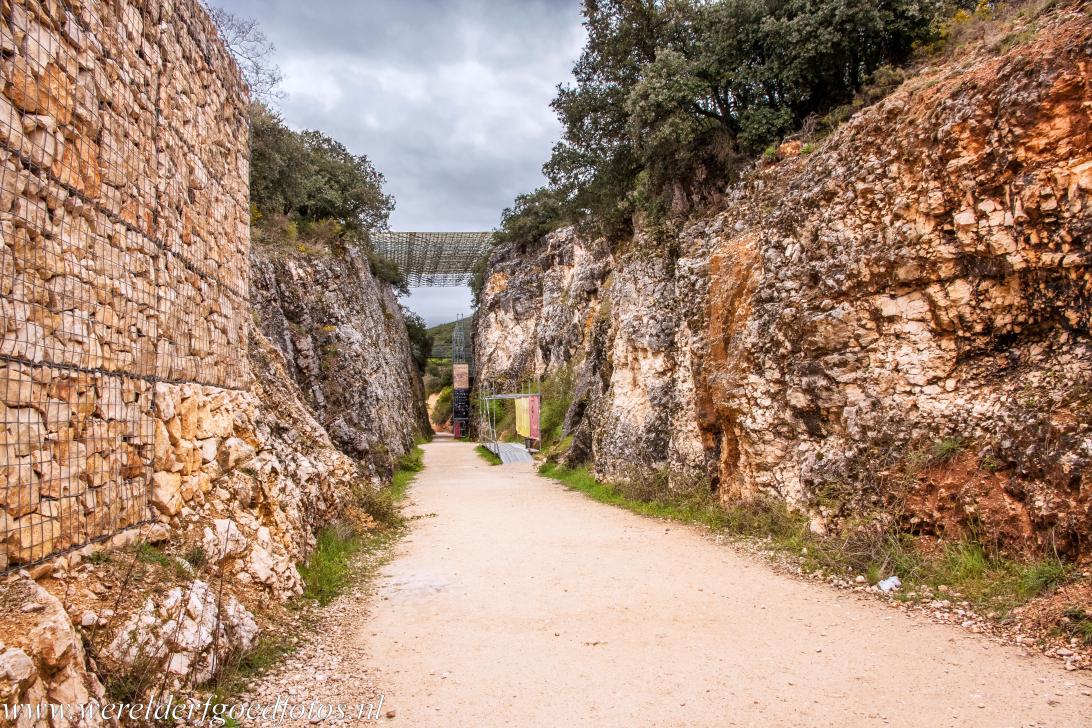
The Archaeological Site of Atapuerca is situated in the Sierra de Atapuerca in the north of Spain. Around one million years ago, the caves of Atapuerca already provided shelter for humans and animals. The caves of Atapuerca were discovered during the construction of a railroad in the 1890s. The Archaeological Site of Atapuerca was inscribed on the World Heritage List in 2000.

The Archaeological Site of Atapuerca is situated in the Sierra de Atapuerca in the north of Spain. Around one million years ago, the caves of Atapuerca already provided shelter for humans and animals. The caves of Atapuerca were discovered during the construction of a railroad in the 1890s. The Archaeological Site of Atapuerca was inscribed on the World Heritage List in 2000.
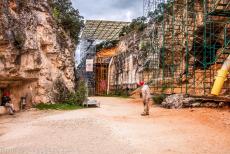
The Gran Dolina, one of the important caves of the Archaeological Site of Atapuerca. Atapuerca is one of the most important archaeological sites in Europe, the archaeological site consists of several limestone caves that preserve a large number of human fossils, the oldest dating back to 1,2 million years ago. Evidence of cannibalism has been found in the caves of Atapuerca.
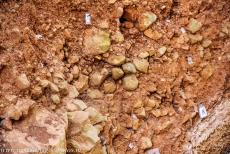
The area around and in the caves of Atapuerca is an important archaeological area, the exact location of the finds are marked so that archaeologists can map the site. To protect the site from damege, access to some areas is restricted. In the caves of Atapuerca, fossils of Homo antecessor were found, an extinct human species. The fossils have cut marks on their bones, that suggest cannibalism.
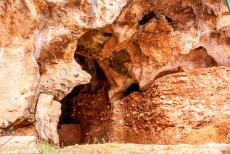
Archaeological Site of Atapuerca: The Gran Dolina cave offered shelter to the earliest known human species in Europe, Homo antecessor, dating from 1,2 million to 800,000 years ago. In the Sima del Elefante, Pit of the Elephant, evidence was found of hominids that fabricated tools. The only known fossils of Homo antecessor were found in the Gran Dolina and Sima del Elefante.
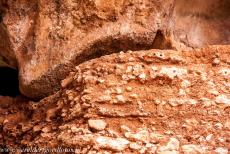
Archaeological Site of Atapuerca: The Gran Dolina is one of the caves of Atapuerca. In the Gran Dolina lived the Homo antecessor and Homo heidelbergensis, an European human species that came later than Homo antecessor, the ancestors of modern humans. Homo antecessor is one of the earliest known human species in Western Europe.
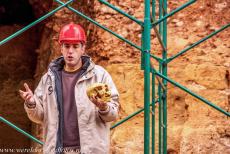
Archaeological Site of Atapuerca: The tour guide shows the fossil of a hominid. The Gran Dolina is one of the caves of Atapuerca. At the Gran Dolina, the fossils of Homo antecessor have been discovered, a previously unknown human species. Homo antecessor is the oldest known human species to be found in Western Europe. Homo antecessor lived 1,2 million to 800,000 years ago.
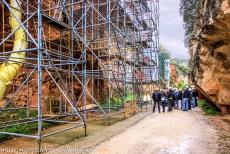
The Archaeological Site of Atapuerca consists of several caves, such as the Gran Dolina, the Sima del Elefante, the Sima de los Huesos, the Pit of Bones, and the Gallery. The Gallery was used as a natural trap, animals were pushed into it, torn apart and eaten. The Gran Dolina is also known as Trinchera Dolina. The Archaeological Site of Atapuerca in Spain is one of the most important archaeological sites in Europe.
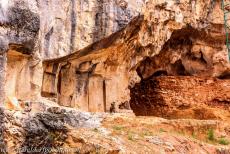
One of the important caverns of the Archaeological Site of Atapuerca is called the Sima de los Huesos, the Pit of Bones. The bones of more than 32 bodies were discovered in the Sima de los Huesos. These hominins lived around 430,000 years ago. The cave Sima de los Huesos is one of the best examples of a settlement of that time. The caves of Atapuerca are closed to the public.

Archaeological Site of Atapuerca: A a diorama inside the visitors cave of Atapuerca. The bones of more than 90 bodies were found in the caves of Atapuerca. Most of these hominins were found in the Cueva Mayor, the Main Cave, and the Sima de los Huesos Cave. The Archaeological Site of Atapuerca was declared a UNESCO World Heritage in 2000.

The entrance to the Archaeological Site of Atapuerca. The archaeological site of is situated close to Atapuerca, a village about 20 km northeast of Burgos in Spain. Guided tours to the caves of Atapuerca depart from the villages of Atapuerca and Ibeas de Juarros. The Sierra de Atapuerca in Spain hide several limestone caverns. The caves of Atapuerca were discovered during the construction of a railroad in the 1890s.
